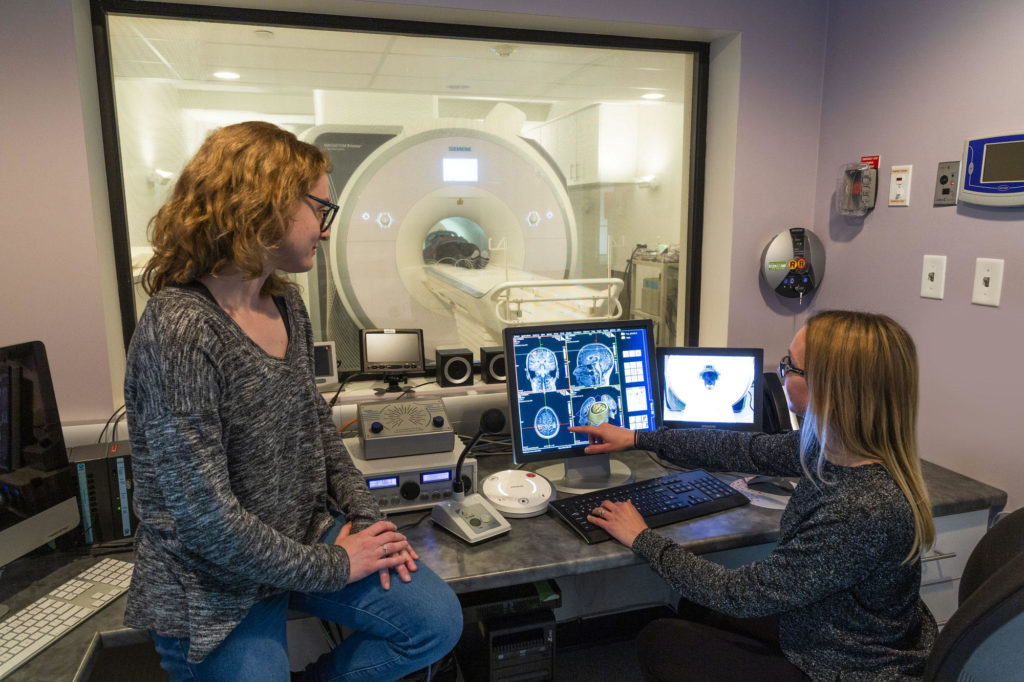
Magnetic Resonance Imaging (MRI)
Our MRI facility offers access to high field, full-service MRI capacity at York University. We have a 3T Siemens Prisma fit with extensive MR compatible research tools and a full-time medical MRI Technologist. We support R & D phase medical device development and technology. We also support academic research with a specialty in neuroimaging. We allow extensive windows of scanner time enabling faster and more cost-effective turn-around for research, product development and testing.
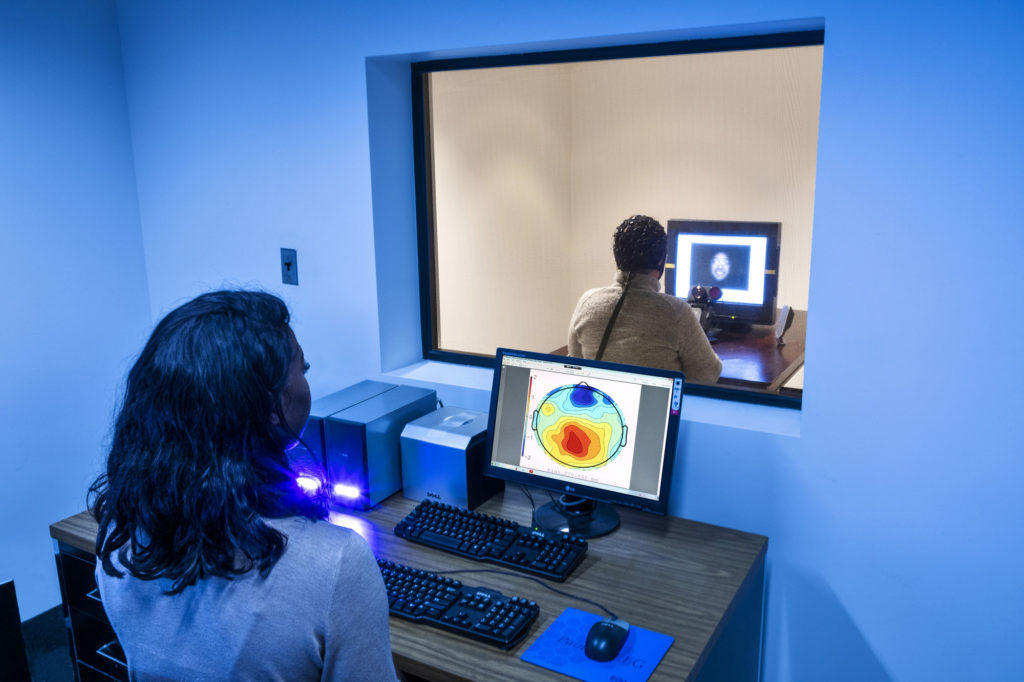
Electroencephalography (EEG)
EEG measures the brain's electrical activity using electrodes placed at the scalp. The signal measured at the scalp has millisecond temporal resolution, and although spatial blurring is introduced as the current passes through the tissues of the skull, high-density EEG recordings carry rich information about spatially-distributed population responses across the neocortex.
A MagStim EGI high-density EEG system can be found in the Kohler Visual Neuroscience Lab in the Lassonde Building. This system collects data from 128 sponge-based scalp electrodes that are easy to apply and practical for use with participants across the lifespan, from infants to seniors, as well as with neuroatypical populations. CVR members who are interested in collecting EEG data are encouraged to reach out to Peter Kohler.
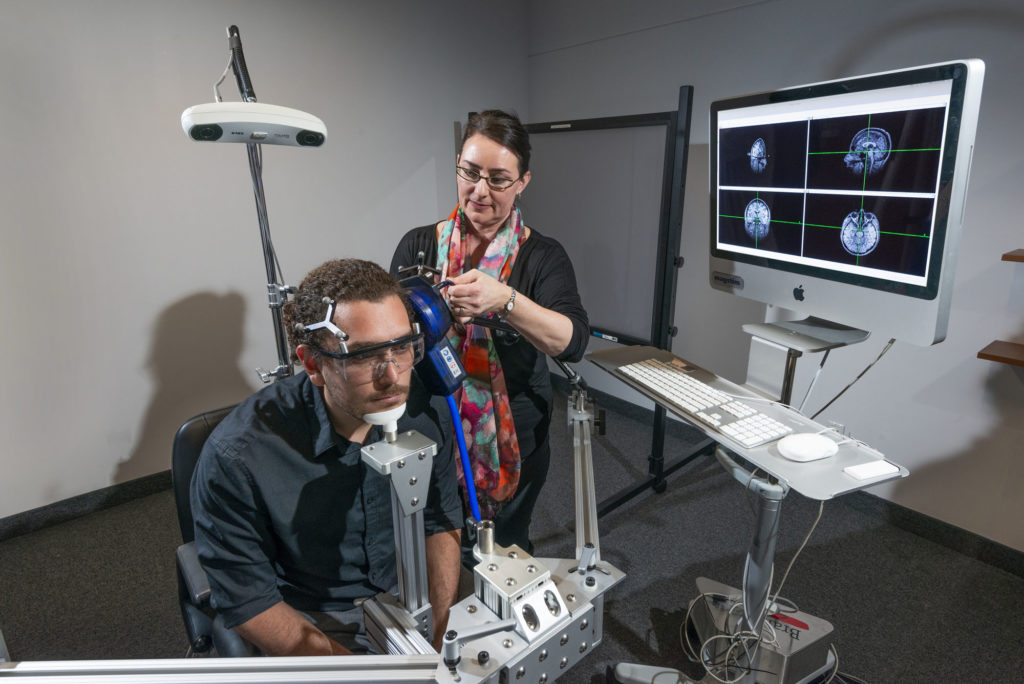
Transcranial Magnetic Stimulation (TMS)
TMS applies transient stimulation (“neural noise”) to discrete regions of cortex through magnetic stimulation of the scalp. It can be excitatory or inhibitory in nature. A MagStim Plus 1 system with Rogue Research’s Brainsight stereotaxic system can be found in the Steeves Perceptual Neuroscience Lab in the Sherman Health Science Research Centre. This system has two figure-of-eight stimulation coils, a sham figure-of-eight coil and an in-magnet (MRI) stimulation coil. CVR members or other outside researchers who are interested in collaborating can contact Jennifer Steeves.
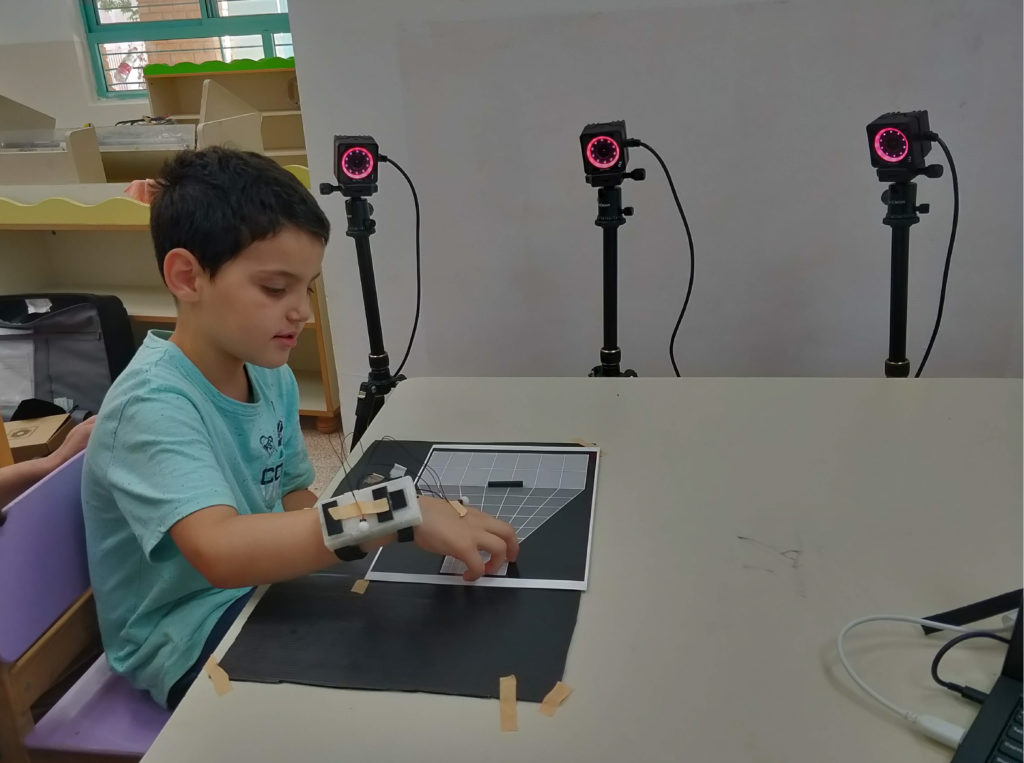
Movement Tracking Systems
Several laboratories of the CVR utilize kinematic, kinetic and (video or electro-) oculography systems to monitor whole-body motion and eye movements. These systems have high spatial and temporal precision allowing us to investigate motor behaviour and the role of eye-movements in perception and memory, visuomotor representations, motor learning, and developmental trajectories of these behaviours. CVR members who are interested in collecting motion tracking data are encouraged to reach out to Nikolaus Troje, Taylor Cleworth, Doug Crawford, Erez Freud or Denise Henriques.
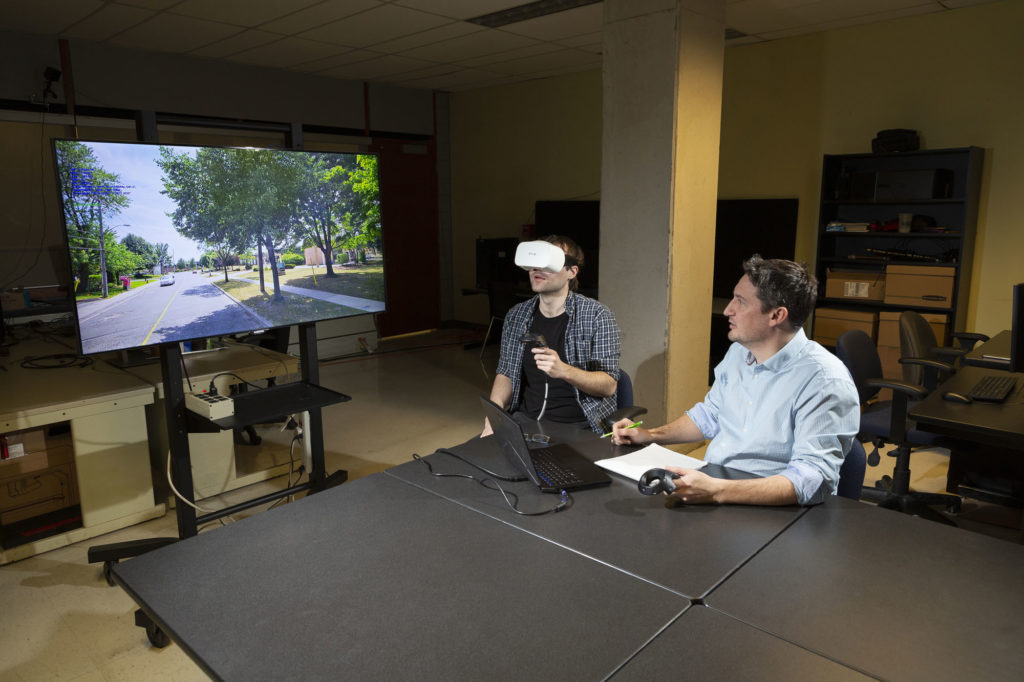
Virtual Reality Systems
Virtual reality systems simulate immersive, 3D, environments, and can be used to provide a variety of visual stimuli. VR systems are used to investigate different aspects of the visual system including 3D perception, motion perception and multisensory integration. Multiple VR setups, sometimes integrated with movement tracking technology (see above), are available and used by CVR researchers including Rob Allison, Taylor Cleworth, Laurence Harris, Niko Troje and Laurie Wilcox.
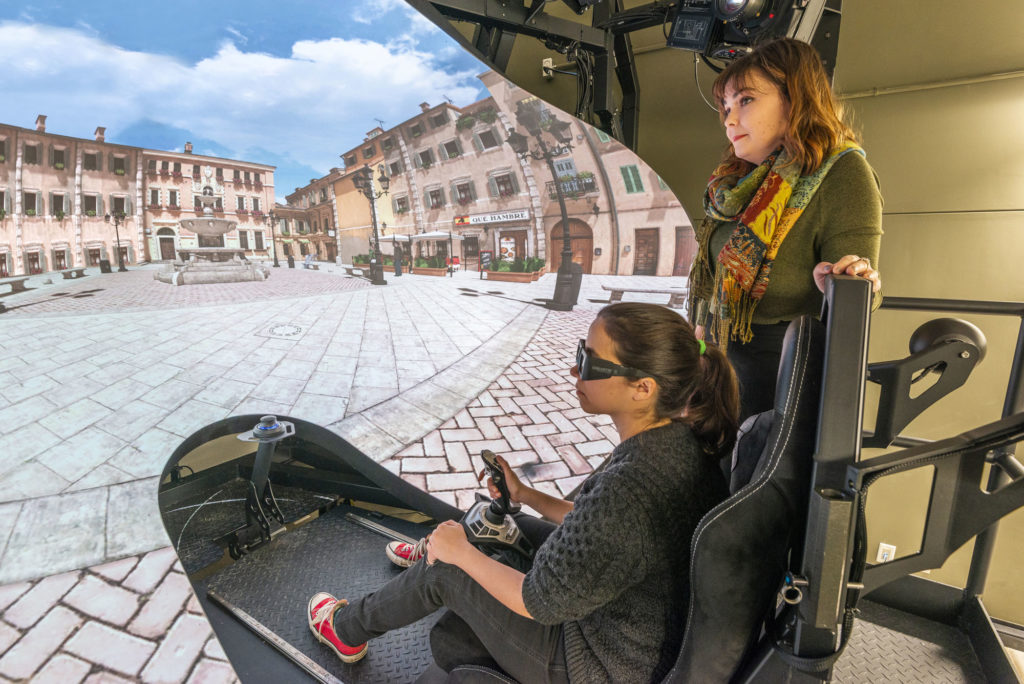
Unusual sensory environments
The visual system operates together with other sensory modalities to generate a unified perception of the world around us. A set of unique laboratories enable the investigation of adaption processes of the visual system and multisensory integration. For example the Tumbling room, Sphere room and the Large field visual display. CVR members or other outside researchers who are interested in using this equipment can contact Laurence Harris.

Partnerships
CVR researchers are working closely with industry, community and academic partners to facilitate their basic and applicative research. Current partners include Facebook Reality Labs, Toronto Rehabilitation Institute, Canadian Space Agency, Defense Research and Development Canada (DRDC), Qualcomm,
